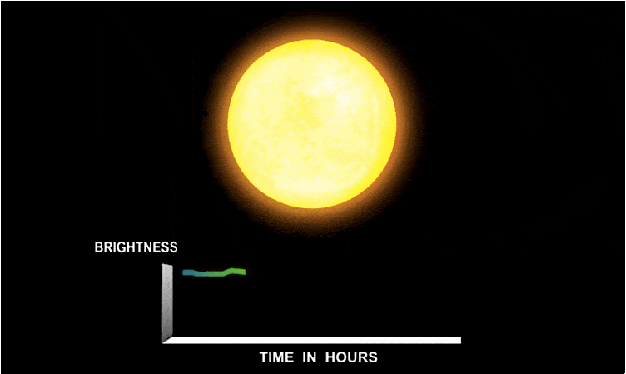As we continue our search for alien life, alien life may have already spotted us.

Cosmic hide and seek
If we would be playing a game of cosmic hide and seek, our position could be spotted from multiple points of the universe.
According to a new study, 1,715 nearby star systems may have been in a position to see Earth in the past 5,000 years. This means that if any of these systems had a species with advanced enough technology looking towards the Earth, they may have spotted the evolution of civilization on the planet. Out of those star systems, 313 exited the Earth transit zone (or ETZ) — where they would have had a direct view to the Earth — in the past few thousand years.
To make matters even more tantalizing, the study goes on to report that out of these stars, 29 potentially habitable worlds orbiting some of these stars could have both seen Earth and received human-made radio waves — a potential tell-tale sign of our civilization.
To reach this conclusion, researchers used the Gaia database — a catalog of public data produced by the European Space Agency, which has data on more than a billion stars in the Milky Way. Using this database, Lisa Kaltenegger (Associate Professor in Astronomy at Cornell) and Jaqueline Faherty (an astrophysicist at the American Museum of Natural History) explored how different vantage points in our cosmic neighborhood would have had a clear view to us.
They found that 1,715 stars are in the right position to have seen Earth since human civilization developed (some 5,000 years ago). Furthermore, they estimate that 75 stars are close enough (within 100 light-years) for human-made radio waves to have reached them. Depending on how advanced our potential observers’ technology would be, they may have been able to figure out that some species are starting to rule the Earth.
Signs of life

You don’t really need to see a planet to know it’s there. A method for detecting exoplanets is to look at stars and notice when there is any dimming in their brightness. When a planet passes between an observer and its star, it produces a small dimming in the star, and the observer can not only know there’s a planet there but also infer its size. If you think that’s pretty net — it gets even better.
When transiting planets block stellar light, a part of that light is filtered through the atmosphere. Based on how it is filtered, an observer can determine whether it has interacted with chemicals like oxygen or methane, which are essential for life as we know it. Oxygen and methane also react to form carbon dioxide and water, which would have sparked even more interest to an observer. Simply put, an intelligent alien observer located in the right place could have figured out the Earth is habitable.
“The discussion on whether or not we should send out an active signal or try to hide our presence is ongoing,” the study notes. “However, our biosphere has modified our planet’s atmosphere for billions of years, something that we hope to find on other Earth-like planets soon. Thus, observing Earth as a transiting planet could have classified it as a living world since the Great Oxidation Event, for a billion years already.”

The researchers also point out that while SETI is looking for a very specific kind of life (one that may want to communicate with us and sends out signals), there may be plenty of other life that is quietly observing — which may be far more abundant in the universe.
So far, we’ve only explored a tiny tiny part of our solar system; we’ve only sent astronauts to the Moon, we’ve only recently started sending rovers to Mars, and anything outside our solar system is currently far out of reach. But remote observations such as this one could help us make better sense of the universe around us and maybe, just maybe, someday get in touch with a different civilization. Whether or not that would be a good thing, however, remains to be seen.
The study was published in the journal Nature.






